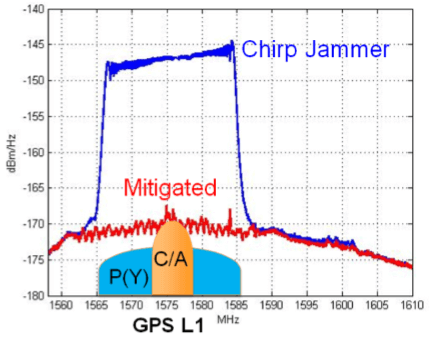The foreman overseeing this operation had the precise location of every vehicle at his fingertips, ensuring smooth and efficient progress. However, without any forewarning, GNSS positioning was abruptly lost, sending warning messages across the screens of the operators’ guidance units. This unexpected disruption led to an immediate halt in operations, resulting in costly machinery downtime and a significant loss of man hours, extending the project timeline by days and weeks.
- What is Signal Jammer? Protecting Privacy with Blockers
- GNSS Beyond Mere Positioning
- Why is GPS Signal Easily Interrupted? Learn About Its Vulnerability
- GPS Interference Solutions: Our Approach
- GPS Tracker Vehicles: How Are They Installed & Tracked?
- GPS Jammer: Common Indicators & Detection Tips
What is Signal Jammer? Protecting Privacy with Blockers
Construction sites situated near bustling thoroughfares, often frequented by commercial vehicles, are prime targets for these jamming devices. These vehicles are typically equipped with tracking devices incorporating GNSS receivers, ensuring that drivers abide by legal driving regulations and avoid tolls. However, the increasing availability of inexpensive PPDs has tempted drivers to deploy them to evade detection or thwart built-in anti-theft systems.
The concerning aspect is that while PPDs operate on low power, GNSS signals themselves are even weaker. A single PPD powered by a standard 12V car cigarette lighter socket can effectively disrupt GNSS signals within a radius of several hundred meters. This disruption not only affects the intended targets but can also have wider implications, interfering with other critical systems reliant on GNSS.
The rise in the use of GPS trackers for insurance and road tolling purposes has further exacerbated the issue. With more vehicles being tracked, the number of jamming incidents has skyrocketed in recent years. A notable case documented by the Homeland Infrastructure Threat and Risk Analysis Center (HITRAC) of the Department of Homeland Security (DHS) occurred at Newark Liberty Airport in 2011. Here, a PPD caused harmful interference with the new GPS-based landing assistance system, resulting in significant disruption. Subsequent monitoring revealed an average of five interference events per day, highlighting the severity of the threat.
PPDs are now considered among the three biggest threats to GPS/GNSS disruption, posing a significant risk to both commercial and critical infrastructure. From trucking companies relying on GNSS for efficient routing to airports relying on precise positioning for landing assistance, the impact of PPDs cannot be understated.
To combat this growing threat, it is crucial to raise awareness among drivers and vehicle operators about the dangers of using PPDs. Strict regulations and enforcement mechanisms must be implemented to deter the use of these devices. Additionally, technology advancements, such as enhanced anti-jamming capabilities in GNSS receivers, can help mitigate the impact of PPDs and ensure the reliability and integrity of GNSS signals.
GNSS Beyond Mere Positioning

GNSS, once primarily known for its positioning capabilities, has now evolved into a pivotal infrastructural component across various industries. From cellular communication networks, where service providers rely on GPS time to synchronize the interactions between mobile devices and base stations, to the banking and stock market sectors, where GPS timestamps ensure the integrity of transactions and help prevent fraud, the significance of GNSS is indisputable.
However, the proliferation of Personal Privacy Devices (PPDs) in vehicles has introduced a new challenge to the GNSS spectrum. Many inexpensive in-car PPDs emit chirp signals, a type of signal that rapidly changes frequency over time. This approach allows a signal with a relatively narrow bandwidth to encroach on a significant portion of the GNSS spectrum.
The impact of these chirp signals on the GNSS spectrum, especially the GPS L1 band, is significant. As Figure 2 illustrates, the region between 1565 and 1585 MHz is often overwhelmed by the jammer, effectively drowning out the GPS L1 signal. This interference not only affects the accuracy and reliability of positioning services but also poses a threat to the overall integrity of GNSS-dependent systems.
To address this challenge, advanced solutions like Wideband Interference Mitigation (WIMU) have been developed. As the spectrum analyzer in Figure 2 demonstrates, before the activation of WIMU (blue line), the GPS L1 signal is heavily contaminated by the chirp jammer. However, upon activating WIMU (red line), the signal is significantly cleaned, restoring the GPS L1 signal to its original clarity.
Why is GPS Signal Easily Interrupted? Learn About Its Vulnerability
GPS signals are prone to interference due to several key factors. Primarily, the GPS satellite orbits tens of thousands of kilometers from Earth’s surface, resulting in a relatively weak signal. Additionally, the modern space environment is dominated by various electromagnetic waves that inherently possess the ability to interfere with each other. This necessitates the use of sophisticated algorithms to authenticate GPS signals and ensure their integrity. However, when these channels become congested with diverse interference waves, the performance of GPS devices can significantly decline. In the case of small GPS jammers, it’s remarkable that even a minimal power output is sufficient to achieve a shielding radius of approximately 5 meters. This underscores the vulnerability of GPS signals and the importance of protecting against such interference for optimal navigation and positioning accuracy.
GPS Interference Solutions: Our Approach
Navigating GPS interference doesn’t have to be daunting. While traditional mapping methods can serve as backup, understanding how to mitigate GPS blocking is crucial. Encountering GPS disruption? Move away from the affected area to restore signals. If unsuccessful, assess your device’s integrity and utilize signal detection tools to pinpoint the source of interference. Staying informed and prepared ensures reliable navigation, even in challenging environments. Learn how we work with GPS interference to keep you on track.
GPS Tracker Vehicles: How Are They Installed & Tracked?
When purchasing a pledged used car, it’s crucial to ensure the previous owner hasn’t left a GPS tracker behind. Otherwise, your every move could be monitored. To safeguard your privacy, invest in professional signal detection equipment. But first, consider a GPS jammer as a temporary solution. Install it, then drive to an underground garage where GPS signals are ineffective. Use this opportunity to carefully scan the vehicle with your detection device and safely remove any hidden trackers. This way, you can rest assured that your new ride is free from unwanted surveillance.
GPS Jammer: Common Indicators & Detection Tips
GPS jamming devices: lightweight (50g-200g), covering 5M-20M. Options include battery-powered or car-mounted, lasting 2-12 hours. Cost-effective, ranging from 30USD-120USD. Antenna count: 1-5. Ideal for various applications.
